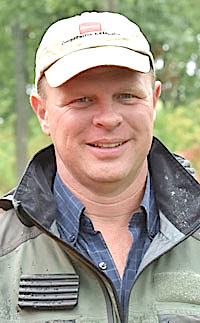![]()

For your convenience, we have installed the link below to make donations to this website easier. Now you can utilize your PayPal account or your credit card.
--------------
Our Primary Pages
Home
Sports
People
Features
Business
Government
Forum
Schools
PSA
Calendar
History
Obituaries
Wine & Tourism
Classifieds
-----------
The woods we call home
The following is the fifth in a series of Odessa File columns from Cornell Cooperative Extension of Schuyler County relating to ongoing CCE educational activities and offerings.
By Brett Chedzoy
CCE Schuyler
 Fall may be that one time of the year that we stop to appreciate the remarkable forests surrounding us as the foliage changes from green to gorgeous. But for the remainder of the year, our woods go largely unnoticed despite their vital importance to our quality of life, culture, economy and environment.
Fall may be that one time of the year that we stop to appreciate the remarkable forests surrounding us as the foliage changes from green to gorgeous. But for the remainder of the year, our woods go largely unnoticed despite their vital importance to our quality of life, culture, economy and environment.
I recently attended the inaugural “New York Forestry Summit” in Binghamton, which highlighted the contributions of forest resources in the Southern Tier. Some take-away messages:
--63%, or nearly 19 million acres, of NY is classified as forest. Three-quarters of this renewable resource is privately owned.
--Forests contribute $23 billion and 100,000 jobs annually to the state’s economy, making it one of our largest industries. Forestry’s annual impact in the Southern Tier is over $7 billion.
--Over 30 commercially-important native tree species are found here, and our woodlands are considered to be the most valuable in the world on a dollar-value-per-acre basis due to the high value, volume and quality of our timber. Over three-quarters of the hardwood lumber produced in this region is exported.
These same woods are the foundation for several other multi-million and billion dollar industries, including tourism, hunting, recreation and agroforestry. One of the sweetest examples of agroforestry is the maple sector, which has grown five-fold since 2000 to a $50 million industry. Much of this growth has been spurred by Cooperative Extension and research programs at Cornell’s Arnot Teaching and Research Forest in Cayuta -- home of the Cornell Maple Program (www.cornellmaple.info).
The summit also acknowledged the growing list of threats to the future health and value of our forests. Among these were studies done by The Nature Conservancy and Cornell Cooperative Extension showing that attempts to replace our aging forests with a new generation of trees have been largely unsuccessful in recent decades. The main reasons for this are excessive deer pressure coupled with the explosive growth of invasive plants. An adult deer will browse over 4,000 oak, maple and cherry seedlings to meet its dietary needs while ignoring the less palatable invasives that eventually take over. New research on regeneration strategies at the Arnot Forest show strong promise to resolving these issues.
It is also disconcerting to note that two of our most prominent species -- Hemlock and Ash -- are rapidly disappearing due to the Woolly Adelgid and Ash Borer. New invasive pests like the Spotted Lantern Fly and Asian Longhorn Beetle now threaten other major tree species as well as our orchards and vineyards.
Despite these challenges, our forests are resilient and will continue to thrive under the stewardship of many thousands of woodland owners. To learn more about Cornell Cooperative Extension’s ongoing programs to support these owners and the forestry professionals who work with them, visit www.forestconnect.info and www.cornellmfo.info. The latter is for CCE’s “Master Forest Owner” volunteers who provide free counseling to hundreds of less experienced woodland owners each year.
Photo in text: Brett Chedzoy (Photo provided)
*****
For the first column in this series, click here.
For the second column in this series, click here.
For the third column in this series, click here.
For the fourth column in this series, click here.
*****
Charles Haeffner
P.O. Box 365
Odessa, New York 14869
